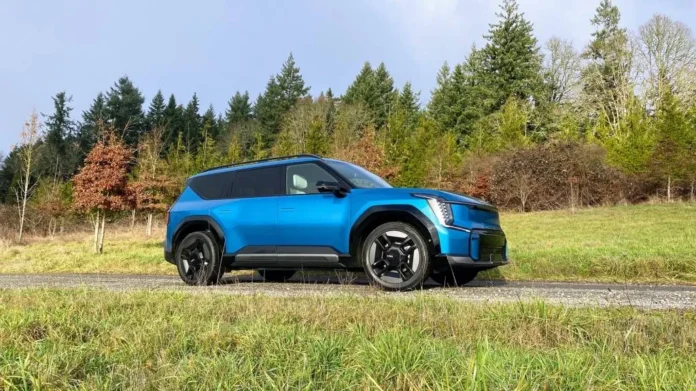Canary Media’s Electrified Life column shares real-world tales, tips, and insights to demystify what individuals can do to shift their homes and lives to clean electric power. Canary thanks EnergySage for its support of the column.
In 2021, Alyssa Cheung’s old gas stove was making her anxious. Cheung was about to have a baby girl, and she wanted to protect her daughter’s developing lungs from the harmful pollution that fossil-gas stoves spew. “I was scared of the health impacts,” she tells me.
Cheung was eager to adopt a cleaner method of cooking for her family and the planet: an electric induction stove. But a major hurdle stood in the way. Her 1940s San Francisco home didn’t have the electrical infrastructure to accommodate an ordinary induction range, the kind you can buy at a big-box store. Those ranges need a 240-volt outlet; she only had standard 120-volt outlets in her kitchen.
So in 2022, after her daughter was born, Cheung became one of the first customers to put down a deposit with startup Copper for a new kind of induction stove — one that can plug into the wall without any electrical upgrades. That stove draws on the trickle of electricity from a 120-volt outlet to charge its own battery, allowing it to provide the bursts of power needed for cooking even without a 240-volt socket.
This March, Copper delivered and installed Cheung’s gleaming new range, which features an induction cooktop that heats pans directly using electromagnetism and an electric-resistance oven. The process took less than two hours, and Copper even carted away her 1940s Wedgewood gas stove to recycle it.
The induction range has a hefty $5,999 price tag before clean energy incentives (more on those below), but “it’s been totally worth it,” Cheung says. Plus, Cheung, who works on the building-decarbonization team at the California Public Utilities Commission, was happy to be an early adopter of a technology that could let households — and home chefs — break up with fossil fuels more easily.
Cheung’s experience might be a snapshot of the future of clean cooking. Battery-powered induction stoves are, at this point, a high-end and scarce product. But that could change in the years to come as the Berkeley, California–based Copper and San Francisco–based Impulse Labs begin to ship their battery-powered ranges to more customers. Here’s what you need to know about the simmering battery-based cooking revolution.
Calculating the costs
The two startups offer products that differ in some key ways. Copper’s product is a full range — cooktop and oven — with a 5-kilowatt-hour battery, while Impulse’s is a cooktop with a 3-kilowatt-hour battery. While both plug into 120-volt outlets, Impulse’s cooktop can alternatively be hardwired into a 240-volt outlet to feed energy back into the home. Both start at $5,999 before tax.
That’s a steep price, especially compared with some of the best-reviewed alternatives on the market. Among gas ranges, the top pick from The New York Times review site Wirecutter can be found for $699. The site’s choice of electric-resistance range is $747.50. As for induction models, Wirecutter put this $2,798 option above the rest.
But customers who get an induction stove with a built-in battery can get some financial aid. The landmark 2022 Inflation Reduction Act provides a federal tax credit for batteries at least 3 kilowatt-hours in size, giving customers 30 percent of the installation cost off their federal tax bill. Both startups say this tax credit applies to their products, bringing down the price to $4,199.
Lower-income households can combine this tax credit with a rebate for electric stoves — part of an IRA program that’s administered by the states — worth up to $840. So far, the rebate is available only in New York. But California, Hawaii, Maine, New Mexico, Rhode Island, Washington, and Wisconsin have been awarded funding to set up their own programs, and several others have applied.
Local incentives, too, might be available in your area; Impulse has a helpful list. And be sure to search the web for “induction rebate” and the name of your state, utility, or town. If available, these rebates will typically save you hundreds of dollars.
Skipping electrical upgrades
Despite the high price tag of battery-powered induction stoves, Weldon Kennedy, cofounder and chief marketing officer of Copper, argues they can still save time and money for certain customers.
Wanting to swap out a gas stove can trigger a cascade of other issues, including needing new electric wiring or a bigger panel or, if you don’t have enough amps, getting more power delivered from the utility to the home. These electrical-service updates can cost $2,500 to an eye-watering $40,000 if the utility needs to upgrade nearby grid infrastructure. (It’s well worth it to first try to use strategies that reduce a home’s power demand.)
If you already have enough amps, or if you need to upgrade your service anyway to accommodate a heat pump or other electric appliances, you still may not have a 240-volt outlet where you want your stove.
Wiring a new outlet is a much cheaper and easier fix than upgrading your service — Cheung was quoted around $1,000 — but it can still be a pain. If your kitchen walls contain asbestos or are coated in lead paint, cutting into them becomes complicated and costlier, Kennedy says.
A device that plugs into a typical wall outlet makes the complication “just go away,” Kennedy notes. Consumers might not only save money but also avoid the headache of juggling these projects. That’s crucial: The easier the transition, the better the chances of getting the more than 40 million households cooking with gas to switch.

Source link by Canary Media
Author Alison F. Takemura
#Batterypowered #induction #stoves #future #clean #cooking







